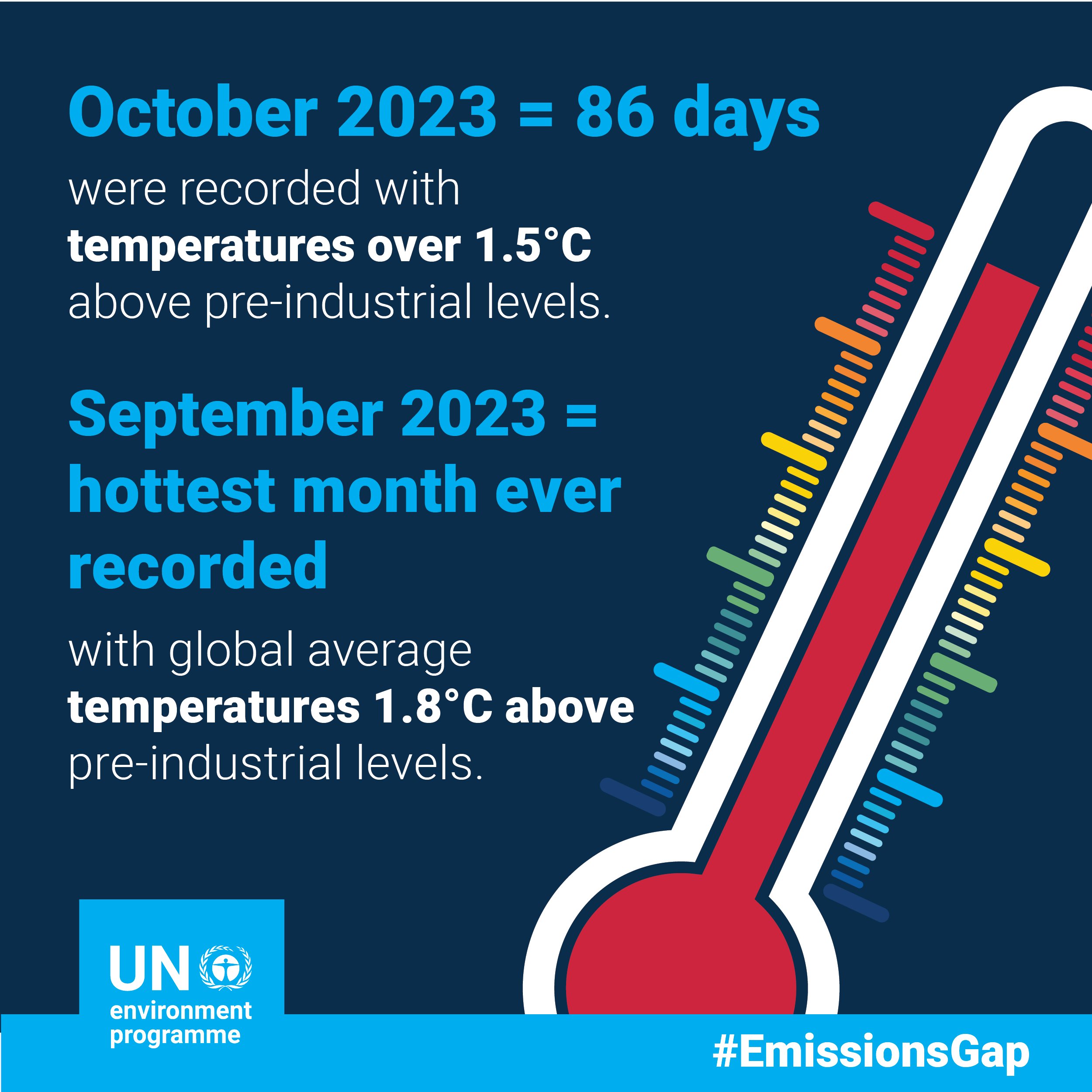The UN Environment Programme’s Emissions Gap Report 2023 calls attention to the alarming trajectory of global warming and the failure to meet emission reduction goals, stressing the need for urgent action to avert catastrophic climate impacts. The report, titled “Emissions Gap Report 2023: Broken Record – Temperatures Hit New Highs, Yet World Fails to Cut Emissions (again),” underlines the world’s deviation from the Paris Agreement goals, with temperatures heading for a rise beyond the agreed-upon limits unless countries improve their efforts.
What’s new in the 14th edition of the Emissions Gap Report?
While acknowledging some progress since the signing of the Paris Agreement in 2015, the report reveals that projected greenhouse gas emissions in 2030, based on current policies, are expected to increase by 3%, down from the initial projection of a 16% increase. However, achieving the Paris Agreement’s 2°C and 1.5°C pathways still requires reductions of 28% and 42%, respectively, by 2030.
The report emphasises the necessity for nations to accelerate low-carbon development transformations, with wealthier countries bearing greater responsibility for emissions taking more ambitious action. The global community must also support developing nations in pursuing low-emission development growth.
Inger Andersen, the Executive Director of the United Nations Environment Programme, warns that humanity is setting records in the wrong direction, with greenhouse gas emissions reaching unprecedented levels in 2022. The report comes ahead of COP 28, underscoring the urgency for heightened climate action to prevent irreversible consequences.
The impact on Namibia
The report’s findings have direct implications for Namibia, where approximately 70% of the population relies on agriculture for livelihoods. Climate change poses a threat to agricultural production, exacerbating existing food insecurity. Namibia is already fighting severe food insecurity, affecting an estimated 14% of the population, according to the World Food Programme. The situation highlights the real-world impact of climate change on vulnerable communities, necessitating comprehensive and immediate interventions.










